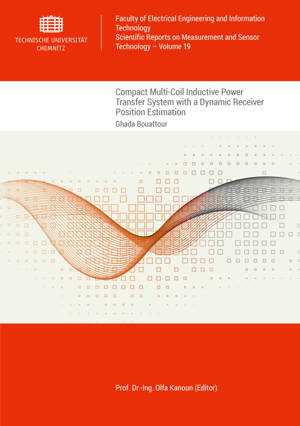
- Afhalen na 1 uur in een winkel met voorraad
- Gratis thuislevering in België vanaf € 30
- Ruim aanbod met 7 miljoen producten
- Afhalen na 1 uur in een winkel met voorraad
- Gratis thuislevering in België vanaf € 30
- Ruim aanbod met 7 miljoen producten
Zoeken
Compact Multi-Coil Inductive Power Transfer System with a Dynamic Receiver Position Estimation
Ghada Bouattour
€ 12,95
+ 25 punten
Omschrijving
Inductive power transfer (IPT) systems intolerance to misalignment limits their ability to transfer energy to objects with flexible or dynamic position. In this thesis, a novel misalignment tolerant multi-coil design is proposed for supplying stationary and dynamic battery-free wireless devices. A compact architecture composed of individually switchable 3 layers of printed coils arranged with overlap for excellent surface coverage. A hybrid architecture based on three compact AC supply modules reduces the supply circuit complexity on the sending side. The sending side activation procedure is based on a measurement of the transmitting coils voltage and the communication between both sides to distinguish a valid device from other conductive objects and to ensure a secure operation. By a prediction of the next position of the receiver, a continuous energy transfer is realized, which is suitable for battery-free devices.The experimental results prove that the proposed architecture has a good performance for different trajectories when the device speed does not exceed 15 mm/s. Besides, the maximum detection time for the initial device position is about 1.6 s. The maximal time interval to check the transmitter coils is around 0.7 s. The proposed architecture reduces the circuit footprint by a factor of 62% compared to common architectures.
Specificaties
Betrokkenen
- Auteur(s):
- Uitgeverij:
Inhoud
- Aantal bladzijden:
- 176
- Taal:
- Engels
- Reeks:
- Reeksnummer:
- nr. 19
Eigenschappen
- Productcode (EAN):
- 9783961001491
- Uitvoering:
- Paperback
- Afmetingen:
- 148 mm x 210 mm
- Gewicht:
- 246 g

Alleen bij Standaard Boekhandel
+ 25 punten op je klantenkaart van Standaard Boekhandel
Beoordelingen
We publiceren alleen reviews die voldoen aan de voorwaarden voor reviews. Bekijk onze voorwaarden voor reviews.








